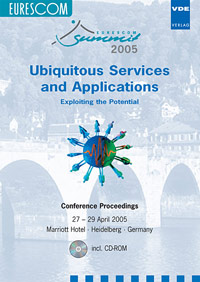Self-Adaptive Multimodal User Interfaces based on Interface-Device Binding
Konferenz: EURESCOM Summit 2005 - Ubiquitous Services and Applications - Exploiting the Potential
27.04.2005 - 29.04.2005 in Heidelberg, Germany
Tagungsband: EURESCOM Summit 2005 - Ubiquitous Services and Applications
Seiten: 6Sprache: EnglischTyp: PDF
Persönliche VDE-Mitglieder erhalten auf diesen Artikel 10% Rabatt
Autoren:
Prammanee, S.; Moessner, K.; Tafazolli, R. (University of Surrey)
Inhalt:
This paper introduces a mechanism that facilitates the dynamic shaping of human-machine interfaces in mobile environments. The necessity for self-adaptability of user interfaces for human-computer interaction (HCI) becomes increasingly important. Such adaptability provides the capacity to facilitate customised interaction depending on the system (and user) context based on automatic configuration of the user interface. The here proposed adaptation mechanisms assumes multiple ‘interface-devices’ that shape, through dynamic binding, the user interface in mobile environments. The introduction of mobile services, which use more than one modality, necessitates the migration of HCI techniques from the fixed domain to portable and mobile devices. The approach and work presented in this paper introduces a support architecture for self-adaptive user interfaces, based on distributed networked (interface) devices in a mobile communication scenario. The framework developed at the core of this work is called “Multi Interface-Devices Binding” (MID-B), it extends the concept of multimodality into the mobile environment, by allowing ad-hoc adaptation of available interface devices, (e.g. display, sound system, etc.). The here described structural design focuses on the definition of the basic architecture and of an extension to a service discovery protocol facilitating the dynamic real time binding of interface devices.


